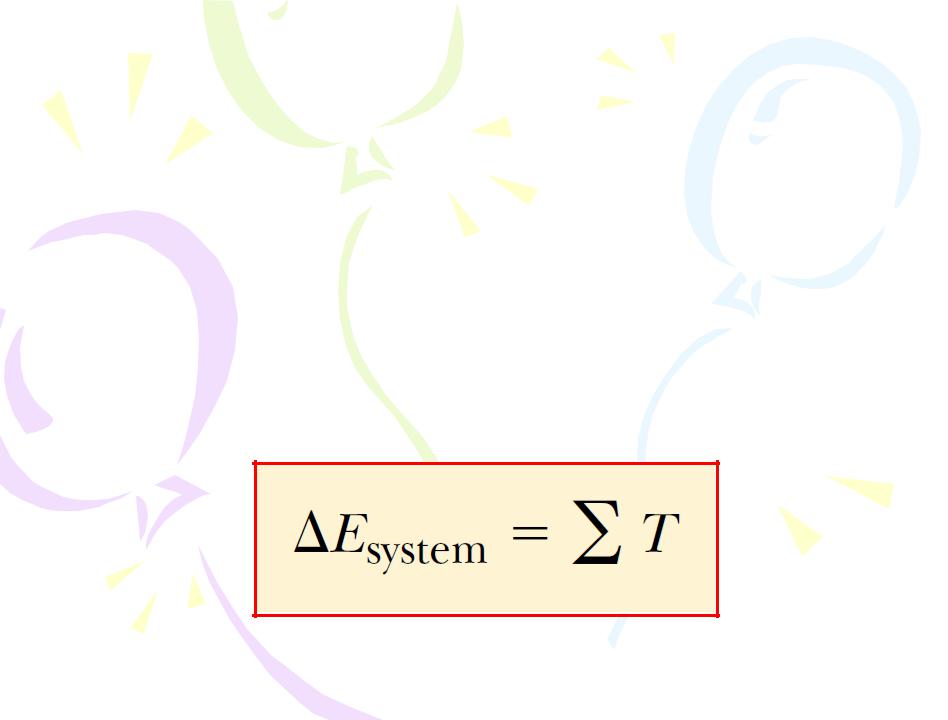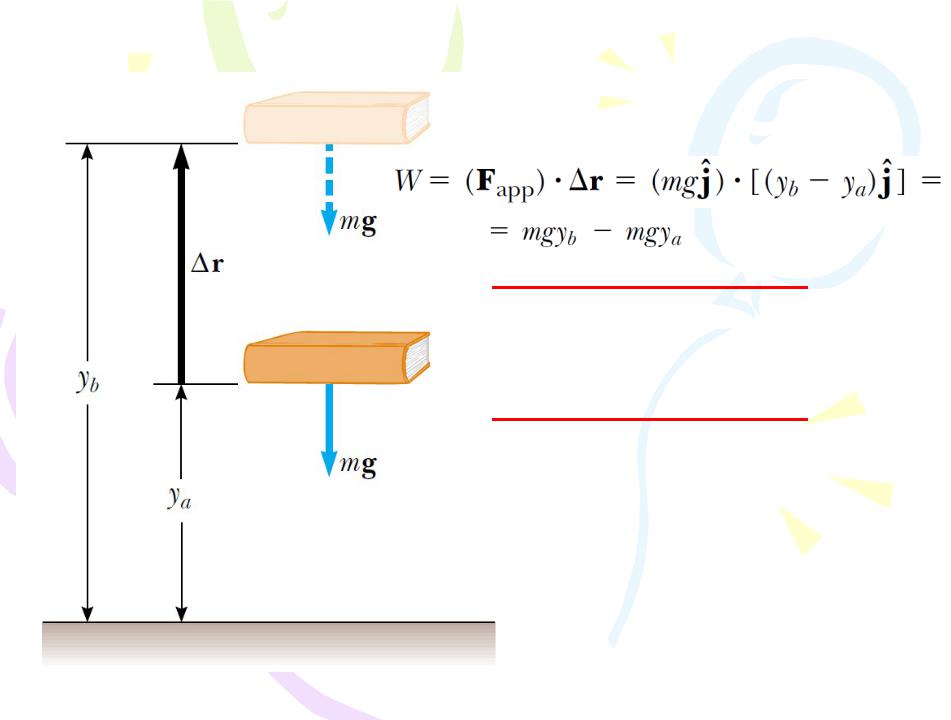
- •Quick Quiz 1 If a fly collides with the windshield of a fast-moving
- •Course of lectures
- •Work Done by a Constant Force
- •Figure 6.2 If an object undergoes a displacement ∆r under the action of
- •Work is a scalar quantity, and its units are force multiplied by length.
- •An important consideration for a system approach to problems is to note that
- •Work Done by a Varying Force
- •Figure 6.5 The work done by the component Fx of the varying force
- •Work Done by a Spring
- •Kinetic Energy and theWork–
- •One of the central features of the energy approach is the notion that
- •Power
- •In a manner similar to the way we approached the definition of velocity
- •In general, power is defined for any type of energy transfer. Therefore, the
- •Potential Energy of a System
- •The Isolated System–Conservation
- •Therefore, equating these two expressions for the work done on the book,
- •We define the sum of kinetic and potential energies as mechanical energy:
- •Conservative and
- •Conservative forces have these two equivalent properties:
- •Nonconservative Forces
- •Changes in Mechanical Energy
- •Relationship Between Conservative Forces
- •Relationship Between Conservative Forces
- •Quick Quiz 1 A block of mass m is projected across a horizontal

One of the central features of the energy approach is the notion that we can neither create nor destroy energy —energy is always conserved. Thus, if the total amount of energy in a system changes, it can only be due to the fact that energy has crossed the boundary of the system by a transfer mechanism such as one of the methods listed above. This is a general statement of the principle of conservation of energy. We can describe this idea mathematically as follows: 
(6.8)

Power
The time rate of energy transfer is called power. If an external force is applied to an object (which we assume acts as a particle), and if the work done by this force in the time interval ∆t is W, then the average  power during this interval is defined as
power during this interval is defined as

In a manner similar to the way we approached the definition of velocity and acceleration, we define the instantaneous power as the limiting value of the average power as ∆t approaches zero: 
(6.9)

In general, power is defined for any type of energy transfer. Therefore, the most general expression for power is
(6.10)
The SI unit of power is joules per second ( J/s), also called the watt
(W) (after James Watt):
A unit of power in the U.S. customary system is the horsepower (hp):

Potential Energy of a System

 (6.11)
(6.11)
Figure 6.8 The work done by an external agent on the system of the book and the Earth as the book is lifted from a height ya to a height yb
is equal to mgyb - mgya.

The Isolated System–Conservation
of Mechanical Energy
Figure 6.9 The work done by the gravitational force on the book as the book falls from yb to a height ya is equal to mgyb - mgya.

Therefore, equating these two expressions for the work done on the book, 

 (6.12)
(6.12)
Now, let us relate each side of this equation to the system of the book and the Earth. For the right-hand side,
(6.13) |
(6.14) |

We define the sum of kinetic and potential energies as mechanical energy: 
(6.15)
We will encounter other types of potential energy besides gravitational later in the text, so we can write the general form of the definition for mechanical energy without a subscript on U:
(6.16)
(6.17)

(6.18) |
Equation 6.18 is a statement of conservation of mechanical energy for an isolated system. An isolated system is one for which there are no energy transfers across the boundary. The energy in such a system is conserved—the sum of the kinetic and potential energies remains constant.

Conservative and
Nonconservative Forces
Conservative Forces
Nonconservative Forces
